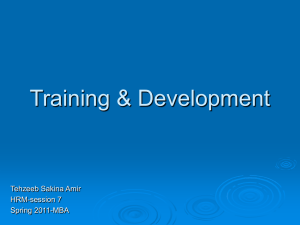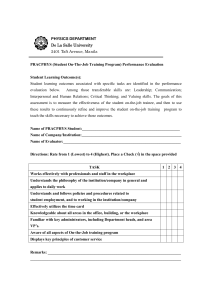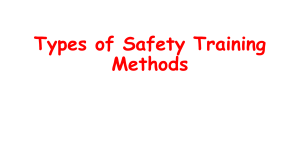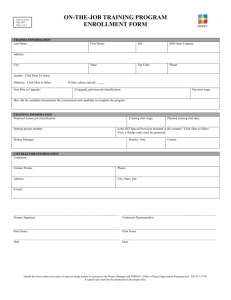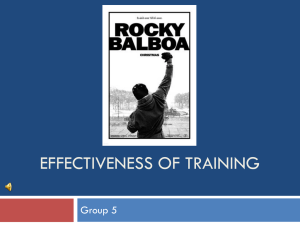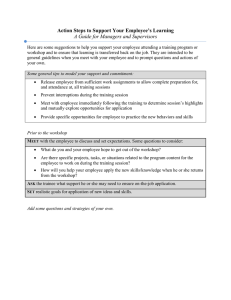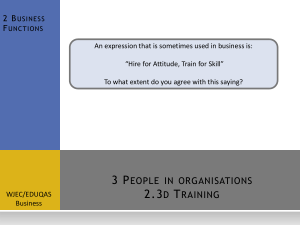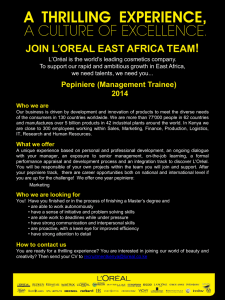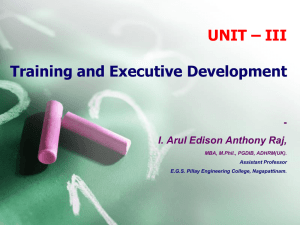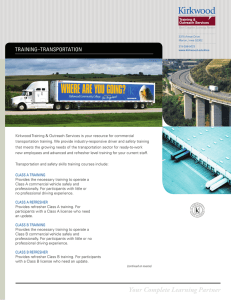training & development
advertisement
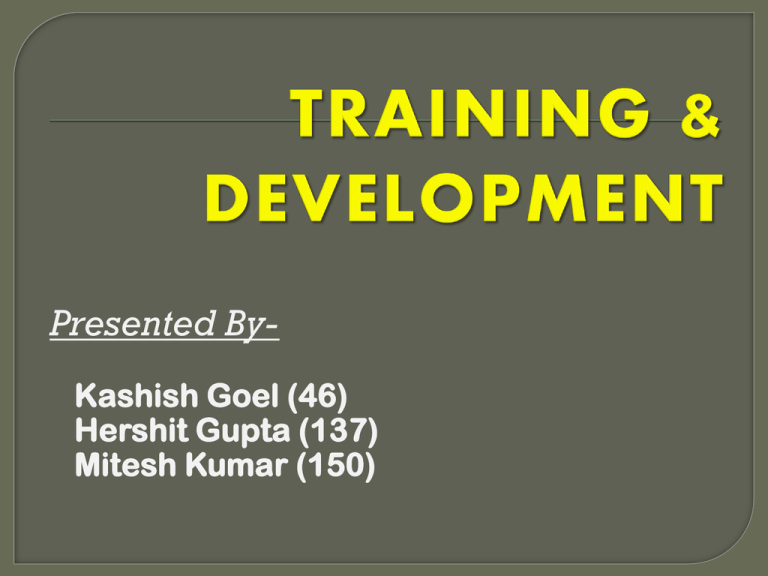
Presented ByKashish Goel (46) Hershit Gupta (137) Mitesh Kumar (150) Training is a systematic process through which an organization’s human resources gain knowledge and develop skills by instruction and practical activities that result in improved corporate performance. According to Edwin B.Flippo “Training is the act of increasing the knowledge and skills of an employee for doing a particular job”. Higher Productivity:- It improves the level of performance by using the method of work. Standardization of Procedure:- In formal training the methods are standardized which help in improving the quality of product and Services. Less Supervision:-Well trained Employees are self Reliant and motivated. Economical Operation:-Trained Employees make more usage of material and machinery, reduced wastage and spoilage. Higher Morale:- Proper Training develop positive attitude, job satisfaction and creates job security by removing employee grievances. Organizational Climate:- It helps in improving the Organizational climate as industrial relation and Disciplines are improved , resistance to change are reduced, Decentralization of Authority and Participative management can be introduced . Identifying Training needs Job Present performance Desired performance Gap Setting Training Objectives and Policy F E E D B A C K & Designing Training Programme Conducting the Training Follow up and Evaluation Approach to Training R E V I E W Types of Training Induction or Orientation Training:- It is concerned with introducing or orienting a new employee to the organisation & its procedure, rules & regulation. Job Training:- It relates to specific job which the worker has to handle, it gives information about machines, process of productions, instructions to be followed, methods to be used & so on. Internship Training:- Under this method, the educational institute enters into arrangement with an industrial enterprise for providing practical knowledge to its students. Refresher Training:- It meant for the old employees of the enterprise. The basic purpose of refresher training is to acquaint the existing workforce with the latest methods of performing their jobs & improve their efficiency further. In the words of Dale Yoder, “Retraining programmes are designed to avoid personnel obsolescence.” Training for promotion:- The talented employees may be given adequate training to make them eligible for promotion to higher job in the organisation. Training Methods On-the-Job Methods - Job Rotation - Coaching - Job Instruction Off-the-Job Methods -Vestibule Training - Role Playing - Lecture Methods - Conference or Discussion -Programmed Instructions On-the-Job Training Method MEANING:This type of training, also known as job instruction training is the most commonly used method. OJT has the advantage of giving first hand knowledge & experience under the actual working condition while the trainee learns how to perform a job, he is also a regular worker rendering the services for which he is paid. Off-the-Job Training Methods Meaning:Under this method of training, trainee is separated from the job situation & his attention is focused upon learning the material related to his future job performance. There is an opportunity for freedom of expression for the trainees. Offthe-job training method are as follows :- MANAGEMENT DEVELOPMENT It is an attempt to improve current or future management performance by imparting knowledge, changing attitudes or increasing skills. “Management Development is an educational process utilizing a systematic and organized procedure by which managerial personnel learn conceptual and technical knowledge for general purpose." THANK YOU
